The most westerly botanic gardens in Victoria, Portland’s gardens are also some of the oldest. The curator’s cottage dates from 1857, and many of the trees are a similar vintage.
My experience at the gardens
My favourite thing in the Portland Botanic Gardens was the curator’s cottage (or gardener’s home). It’s a beautiful bluestone building, and although it was not open to the public on the windy winter’s day I was in town, it actually gave me lots of food for thought, and even helped add to my ‘history section of this blog entry.
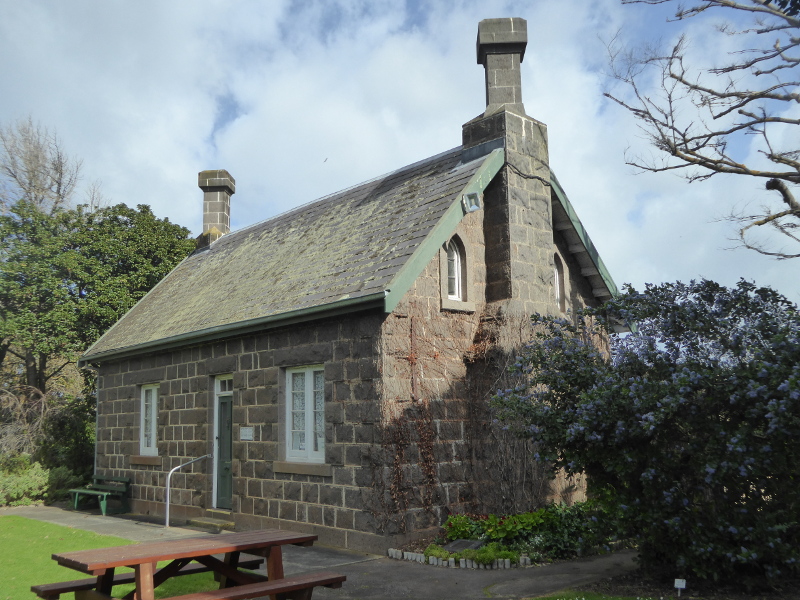
In the window of the cottage was a very informative A4 sheet, explaining how the first six or so curators all lived here, and there is a list of their names just by the front door.
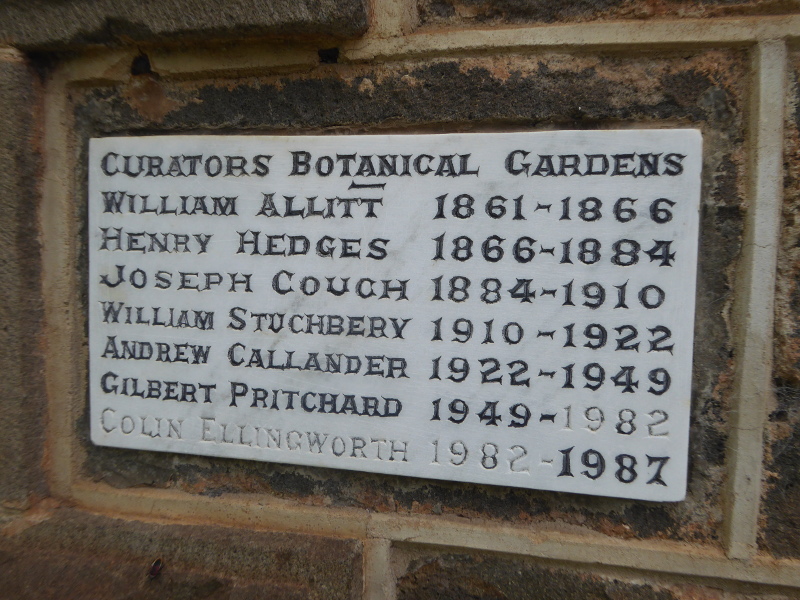
I learned that inside, on the ground floor, is a kitchen and parlour, while upstairs was the bedroom and nursery. Not much room for a big family, therefore, and all water and toilet facilities must have been outside out the back, but it had a cosy feel nonetheless.
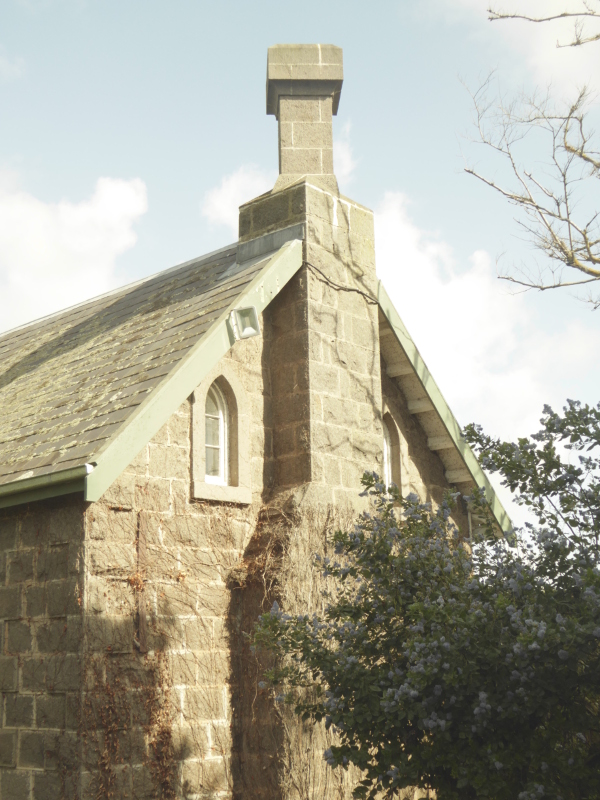
Since the mid-1950s the curator has moved to the brick building next to the Gardens, and this cottage has been a museum for the local historical society.
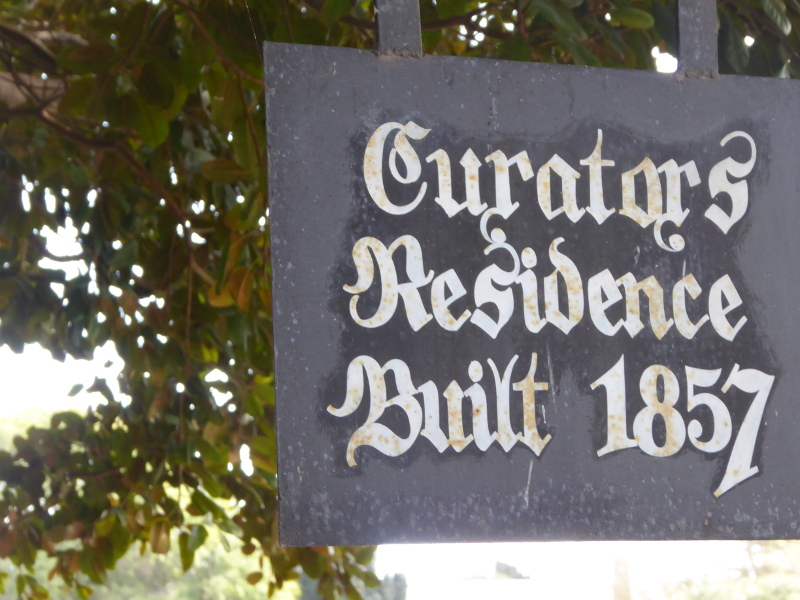
There weren’t too many vintage structures around Portland’s botanic gardens otherwise.
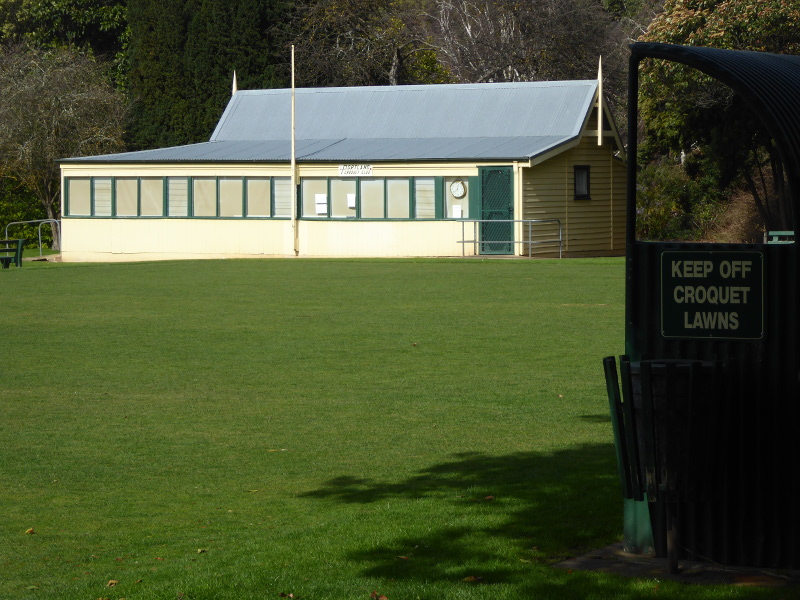
The croquet lawns still take centre stage.
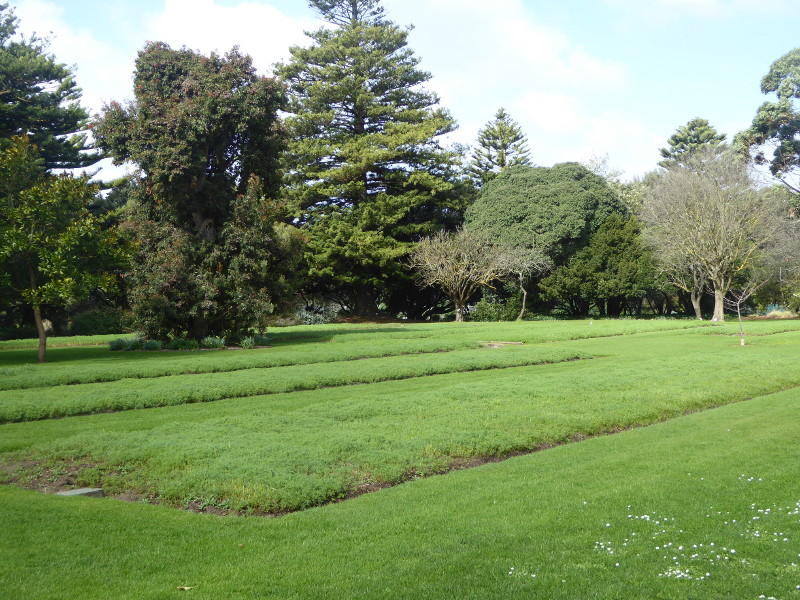
And beside them are a series of flower beds marked on the gardens map as for dahlias. Now, I’m a big fan of dahlias, and I love the vintage continuity here if there are still dahlias in these beds, as Portland’s gardens have specialised in dahlias since they opened more than 160 years ago.
I’m not good at recognising dahlias when they return from their hibernation, though, so I couldn’t tell whether the plants appearing in a green sea covering all these beds were in fact dahlias. There was no signage by the beds, which worried me somewhat, as you’d think they’d proudly announce the great history of dahlia-growing for 160 years if that is the case, but I need someone who knows – or someone who gets back to these gardens later this spring – to confirm whether or not these are indeed for dahlias still.
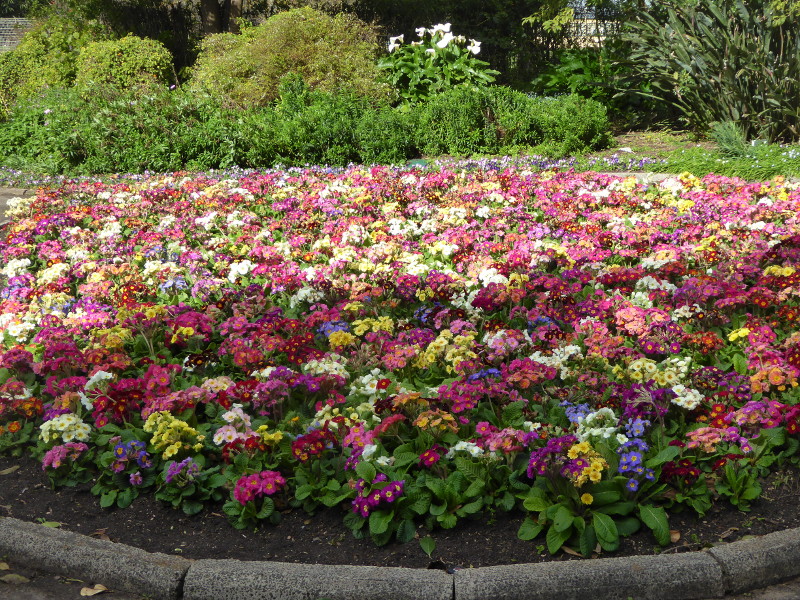
There were already pools of colour in Portland’s gardens on this late winter’s day. Polyanthus here, I think.
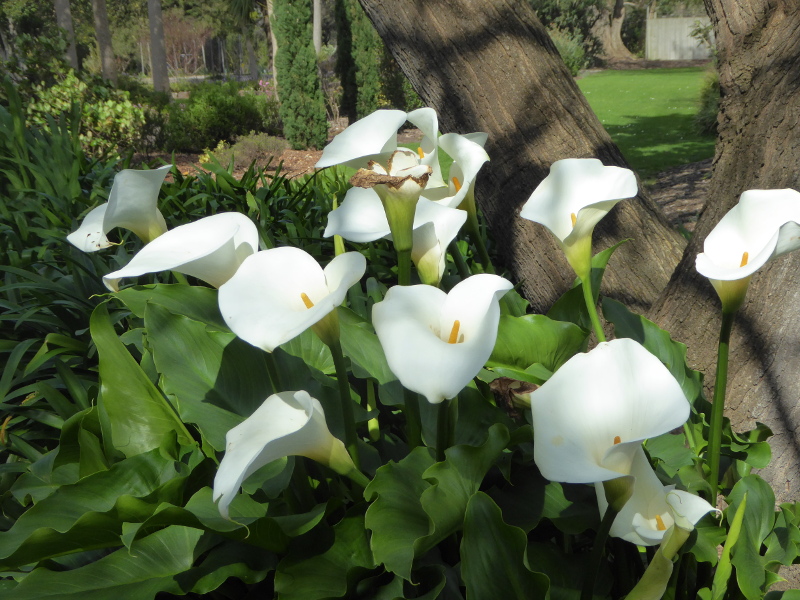
And lots of lilies like these dipping in the gale force winds (is it always gusting like that in Portland?), as well as camellias in bloom all over the place.
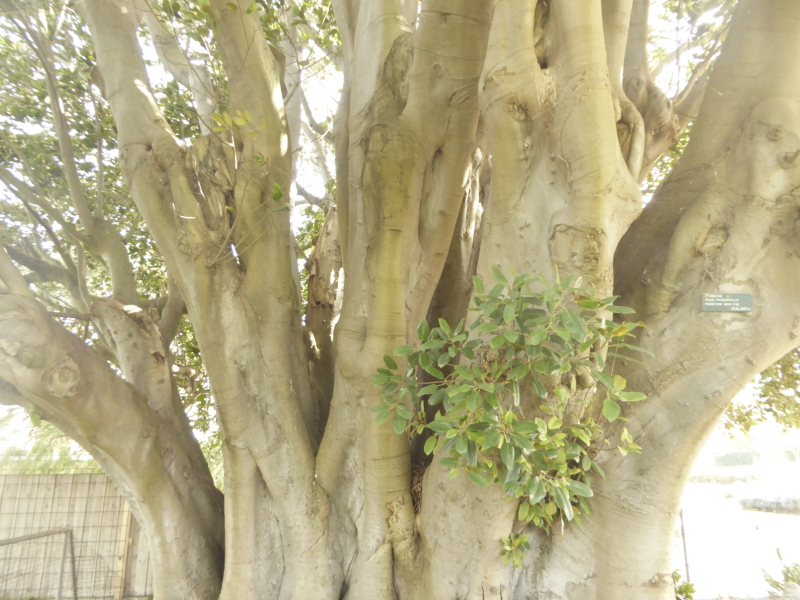
Some of the trees really look ancient. The Moreton Bay Fig by the entrance gate has an almighty trunk now.
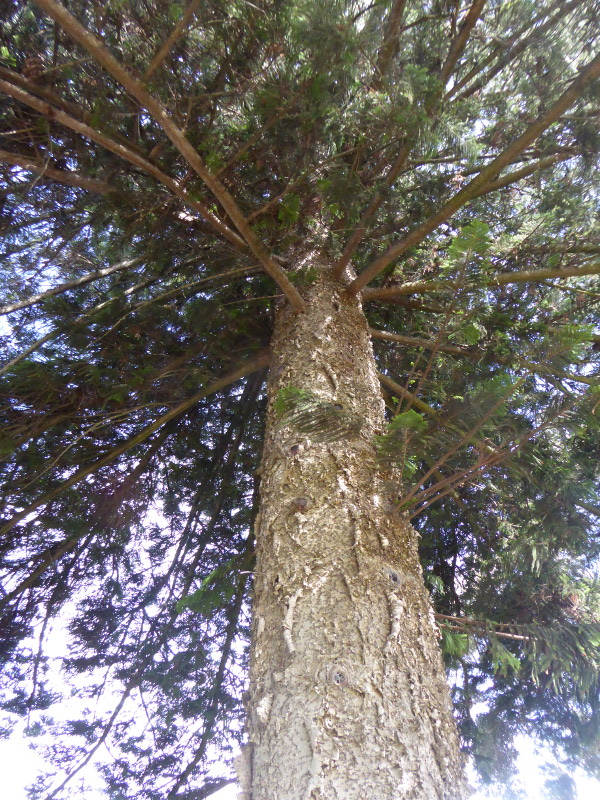
And a lot of the Norfolk Island Pines seem much taller and more massive than many I have seen around the coast of Australia.
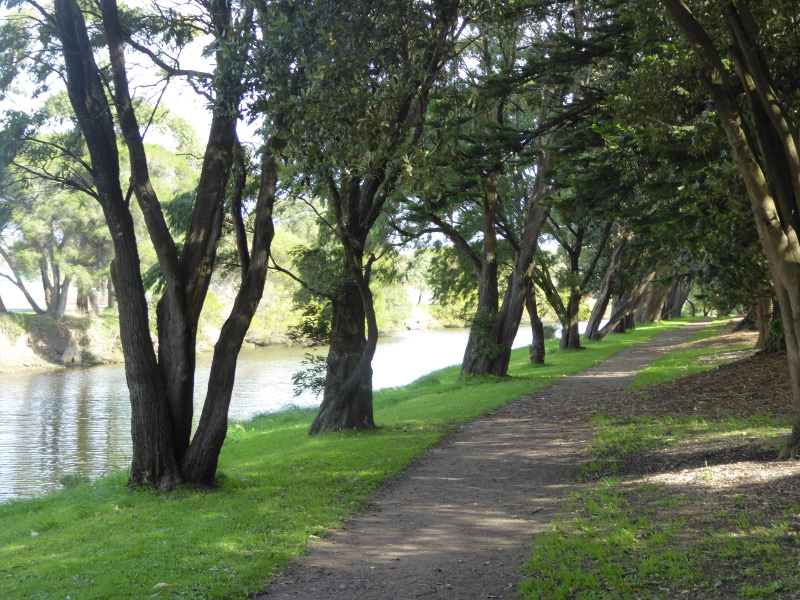
Portland’s gardens are bordered on one side by a waterway, which seems to be called a cabal, although it looks more like a river or creek.
The pine trees and eucalypts lining the bank must provide welcome shade for people strolling through the gardens in mid-summer.
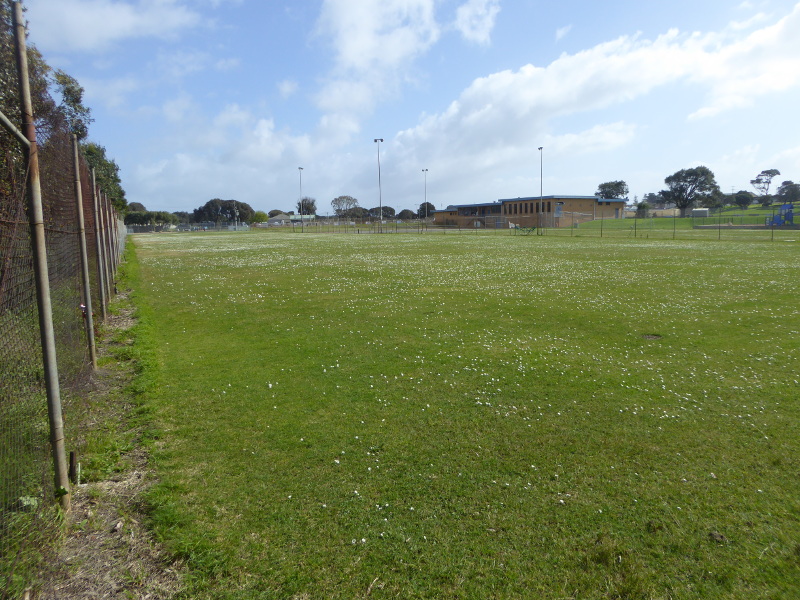
There’s no obvious entrance down at this end of the gardens, unless the riverside walkway ends at a gate of some sort. I stopped at the tennis courts, which looked beautiful if out of action for now and a sea of daisies which might have to go if they are to be used this summer for tennis.
Being right by the water, mind, a wayward lob on a windy day might well see quite a few balls end up in the drink.
I think part of the gardens might have been lost when the port expanded at some point, but it’s not clear where that part was.

Across the road from today’s garden fence is a working port still. I guess on a still, quiet day the noise of the port might be heard from the gardens, but on this blustery day the only sound was the rustling of leaves and howling of wind through all the trees across the gardens.
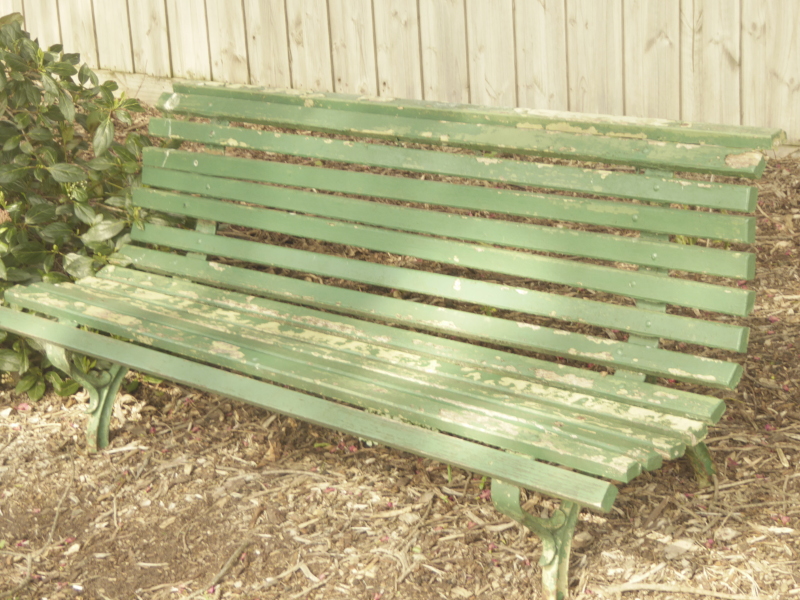
This was the nearest I got to finding a vintage bench in Portland Botanic Gardens.
And there were no obvious vintage lamps, as far as I could see.
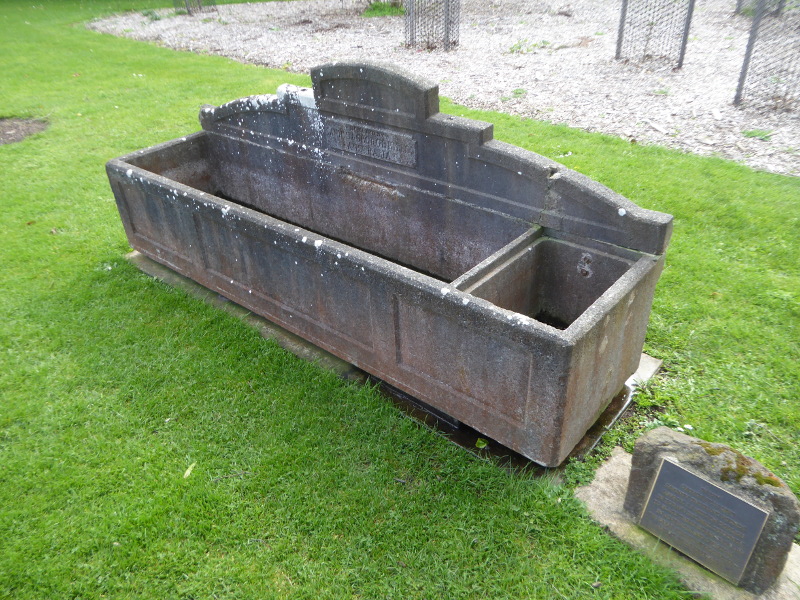
This water trough was similar to one in Koroit Botanic Gardens. But the Portland trough had a fascinating plaque next to it, explaining how a man called George Bills left enough money in his will in 1927 to buy 7,500 of these, 500 are dotted around Australia and another 7,000 around the world.
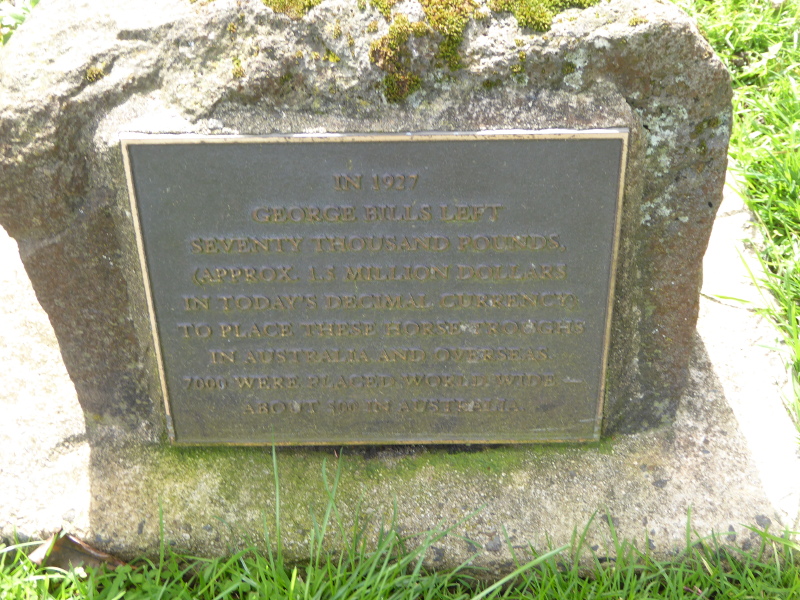
Now, there’s an intriguing project. I wonder how many of them are still standing in different parts of the world, and where? Has anyone seen one near their home or on their travels?

I really enjoyed my stroll around these gardens. They are well-maintained, with lots of labelling on plants and trees, and must be a changing sight and feel through the different seasons.
I sat in my car for a picnic lunch, the wind just too strong to sit on that bench comfortably. And what did I hear as I munched on my sandwich, but the sound Portland’s vintage tram trundling past. I was too slow to get a pic, but I’ll be back later this year to ride the tram and review it for Vintage Victoria.
Practicalities
There are toilets in Portland Botanic Gardens, but not many benches I found.
The gardens seemed to have open access 24/7.
Parking was a little tricky to find, and if you are like me, you might end up parking with the vintage tram line literally running past the back of your vehicle, so don’t be surprised if a tram trundles past as it did for me.
History and stories
Portland Botanical Gardens are registered as opening in 1858, but the first Trove entry dates from December 1857 and refers to money being found to make ‘improvements’ to the gardens, which presumably therefore were already in place. The plaque marking the 150th anniversary adds to the date mix, as it was put up in 2001.
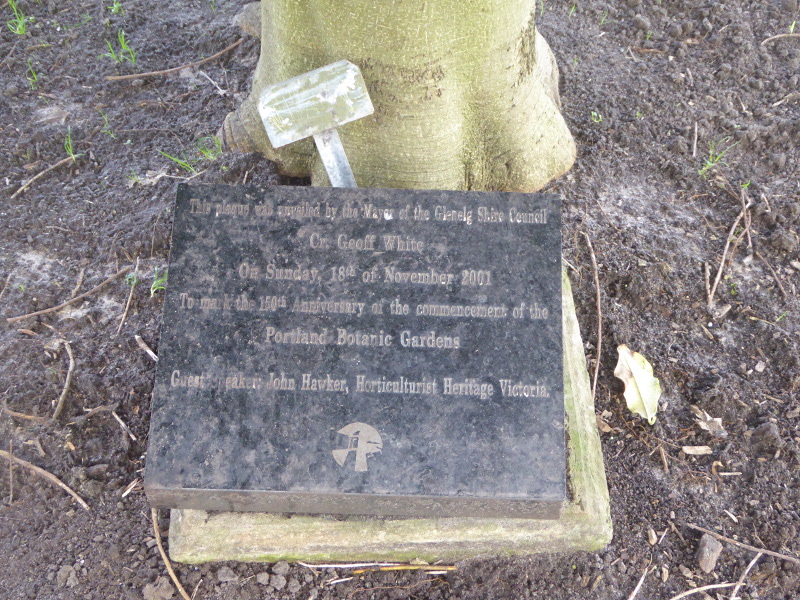
Mr Allitt was the first curator, residing on-site in the beautiful stone cottage which still stands today and is dated as from 1857. The notice in the window today actually tells a tale that didn’t appear on Trove’s database of press clippings.
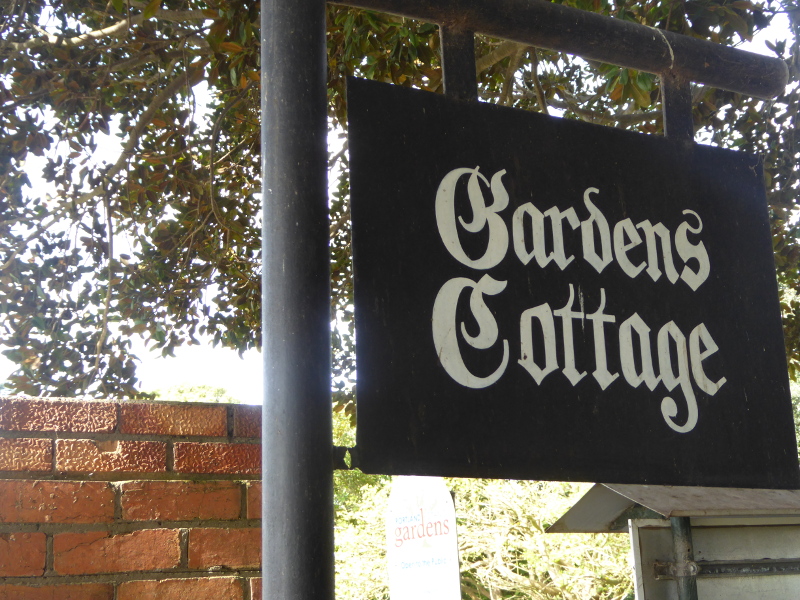
Mr Allitt apparently quit the job when asked to take a pay cut after the major landscaping work had been done, the idea being that mere garden maintenance was not worth the salary or fee of a landscape designer. But the very interesting paper in that window in 2021 also adds that he met with disapproval in some quarters when refusing to take down some statues that were causing offence to some locals. I do wonder what the statues showed – probably a semi-nude body, knowing the prudish morals of the times – and where they ended up? Are they still somewhere around Portland?
In 1863, prison labour was brought in to work on improving the gardens. Reports suggested that 40 Chinese prisoners worked on trees, flower beds and walkways, much to the curator’s delight at the time. A later tale, looking back on gold rush days, recalled that many Chinese came to Victoria in the 1860s, but if caught after landing, had to pay a tax (some called it the ‘pigtail tax’), landing many in prison because they had no funds to pay such a fee. That explains why there would be teams of Chinese prisoners available to dig the botanic gardens. Anyway, one correspondent in 1937 reckoned that it is thanks to the industry of these ‘prisoners’ that Portland has such beautifully-landscaped gardens.
A correspondent to the local newspaper in December 1867 said: “A walk in (the garden) at this season is one of the greatest pleasures our town affords, but a walk there in the morning surpasses everything.”
There were various descriptions of the gardens in newspaper articles over those first decades. 700 dahlias, reported one (and I am still wondering how that compares to the number still in those dahlia beds today?). There were four axis deer in the Gardens in 1868; no sign of them in 2021.
In 1876 they turned a swamp into islands and a lake, but I fear that may have been lost when part of the gardens were eaten up by port expansion. In 1877 there was a picket fence all around which has now become a rather more functional metal fence. The Moreton Bay fig by the entrance gate certainly got a mention in 19th century articles, though, so that is a survivor.
One big loss for the Gardens today, and I wonder when they took it away, because it was still getting regular mentions in the early 1950s, is the lifeboat from the 1859 Admella wreck. There’s such a great story, though tragic in so many ways, about this particular wreck, I do hope somebody has stored that lifeboat away somewhere safe, with information telling the tale in full. Just 19 people survived off a boat carrying more than 100, and the Portland lifeboat played a major part in the rescue operation.
In 1929 a visiting bird-watcher wrote to the curator to say how on his holidays in Portland he visited the gardens regularly and made a list of 32 different species of birds he spotted in the gardens. I wonder how many are still to be seen today?
Wildlife of a less welcome nature was found in 1936, when the then curator discovered Rutherglen bugs had taken up residence.
But that seems to be about the most drama to hit the Gardens through its first 100 years or so, if Trove is to be believed.
A 1938 visitor marvelled at the beauty of the gardens, equal “to any others I have seen.” She also noted the dahlias blooming (almost 80 years on from their first mention), and noted that croquet and tennis was being played in the gardens. Dahlias were still stars of the local shows as late as 1950, so I really hope they have been kept through into the 21st century…
In December 1940, as war raged across Europe, a more parochial war was being ignited in Portland over the decision to remove some pine trees from the gardens. A ‘J. A Henty-Wilson’ wrote to the Portland Guardian asking the ‘citizens of Portland to rise up’ and protect these vestiges of pioneer days. It’s not clear what the outcome was, but I couldn’t help wondering if, with a name like Henty (even diluted by a hyphen and a ‘lesser’ name), there was not a degree of nostalgia here, though I hope the Council had good horticultural reasons for their decision. Six months later the pines were still in place…
Some of those pines might have been removed, but in 1949, somebody wrote that the tallest tree in the area was a Pinus Gigantica in the Botanic Gardens, at 119 feet high (and a girth of 12 feet). A cypress tree more than matched the pine’s girth, measuring 35 feet, 6 inches around.
In 1951, the curator of the Gardens managed to produce tomatoes all year round after successfully grafting a tomato plant onto another hardier type. This made the news all over Australia, though I’m not sure whether the method caught on, and tomatoes remain really a summer produce 70 years on…
In the last story on the Trove database, the gardens curator had an accident in October 1952. A large branch fell from a tree in the gardens, bounced onto the ground where he was working, and broke his arm.
What are your experiences at Portland Botanic Gardens?
Does anybody know what happened to the Admella wreck, which used to be in the gardens in Portland?
Similarly, can any local historian fill us in on the fate of the statues that used to stand in the botanic gardens, even if they were all removed many moons ago?
Has anybody got their own memory to share from a visit to Portland Botanic Gardens, perhaps dating from some decades ago, or just tell us what you like best about the gardens today?
And can somebody confirm whether those green beds from the time of my winter visit are filled with flowering dahlias in spring and summer?
Other links and writings on the Portland Botanic Gardens
If doing your own search for Portland Botanical Gardens, just beware there are Portlands also in Oregon and in Dorset…
This Reddit Road Life blog post from April 2021 proves that those beds in my pics are indeed full of dahlias.
The My Local Plant Nursery site has an entry for Portland Botanic Gardens.
This excellent Western District Families historical blog post gives great detail on the history of these gardens in Portland, including a suggestion that the original tennis courts are now the rose garden, and telling us where to find these days the remains of the wreck of the Admella – in a local museum…
And the ABC Local story here also shows the dahlias in bloom, with another mention for the old tennis courts.


My dad was the last curator to be put on the cottage plaque.
Admella lifeboat which used to be in the gardens in Portland is now housed inside the Portland information Maritime museum
Ah thanks for the local info update!
My father took us on a stroll through the gardens in 1957 when I was 5 years old. I remember being enthralled with the Gardener’s Cottage and the deer.
My father was admiring the heavily
fruit laden crab apple tree beside the cottage when the head gardener emerged and asked if I would like to try one.
One greedy bite of the apple revealed its bitter taste which I quickly spat it out to much mirth from my father and the gardener.
Nice memory, Charles…Except for the crab apple!